Claiming a seventh consecutive constructors championship with effectively a quarter of the season remaining is a doubly momentous achievement, one of which the entire Mercedes Formula 1 staff complement operating out of its two facilities – the race base in Brackley and power unit operation in Brixworth – can be massively proud.
In so doing Mercedes has surpassed Ferrari’s spree of six titles, which Renault and Fernando Alonso ended in 2005 after the FIA introduced swingeing rule changes which demanded that drivers qualify and complete an entire race on a single set of tyres. This proved advantageous to Michelin tyre users and Ferrari, the only major team shod by Bridgestone that year, won a single race, the farcical United States Grand Prix.At the time folk in the paddock suggested that these changes were aimed squarely at ending the Scuderia’s hegemony; at truncating a period of dominance which saw Michael Schumacher and the Jean Todt-managed squad rewrite virtually every record in the book.
There have been other periods of similar supremacy over rivals – think the McLaren-Honda period or the Williams active suspension years. However, none had been as sustained or as overwhelmingly dominant as Ferrari’s 1999-2004 campaign under Todt, when everything gelled for six straight years. Until, that is, Toto Wolff’s Mercedes squad strung seven titles together – and all pointers are that the team will continue its momentum into next year.
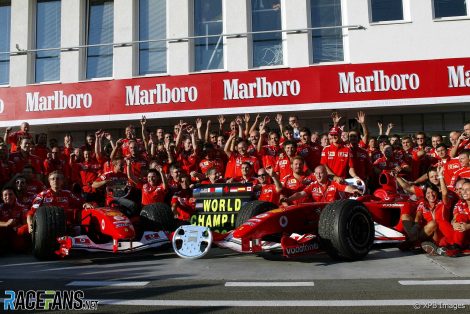
The two men came to lead their respective teams to record-setting heights from opposite directions: Todt, a dyed-in-the-wool petrolhead whose early career was spent in co-driver seats alongside rally legends, moved into motorsport management with Peugeot, leading the French marque to world glory in rally, cross-country and sports cars and Monte Carlo, Dakar and Le Mans victories.
In 1993 a down-and-out Ferrari came calling, the contact massaged by then-F1 tsar Bernie Ecclestone. The Scuderia needed a root-and-branch overhaul: out went V12 engines and stylish but unsuccessful chassis and so-so drivers; in came V10s, sleek cars designed by Rory Byrne and operated by Ross Brawn, wielded by the immense skills of Michael Schumacher. It took six years before the first title arrived; thereafter they rolled in.
Advert | Become a RaceFans supporter and
Wolff, an entrepreneur and amateur racer, had it comparatively easy: he invested in Williams ahead of its initial public offering, then became executive director when CEO Adam Parr departed during disagreements with Ecclestone. Wolff was on the pit wall when Williams won its last grand prix – that unlikely 2012 victory in Spain scored by Pastor Maldonado – which brought Toto to the attention of Mercedes CEO Dieter Zetsche.
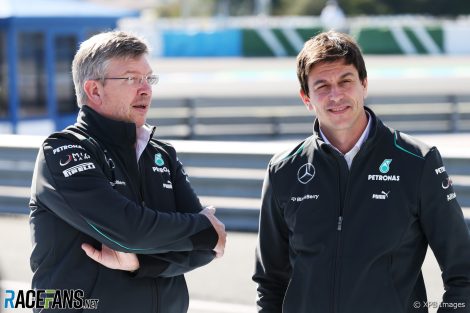
Thus, when Zetsche in early 2013 recruited Wolff as managing partner for the F1 team (excluding the engine facility, run by Andy Cowell), all ingredients for the team’s ascension were in place: Hamilton alongside Nico Rosberg, gold standard engines, state-of-art facilities and promises from Ecclestone to pay Ferrari-esque bonuses should Mercedes win double constructor titles. Plus Wolff enjoyed Brawn’s mentorship for a year.
Todt went on to become FIA president, and is now nearing the end of his third and final term – FIA statutes limit the number of terms – while, in a final twist, Wolff, who lost out to Stefano Domenicali in the race to succeed Chase Carey as F1 CEO, is now thought to be eyeing motoring’s top job.
“Having achieved everything with Mercedes, Toto now wants to put something back into the sport,” a Wolff associate recently told me. “That means the top FIA office…”
The two may well continue to vie for legacies. That said, in matters statistical all is not what they appear at first glance, for various internal factors and external circumstances invariably skew comparisons one way or the other. Even the most cursory comparison between two record-breaking teams highlights fundamental differences that make it impossible to directly compare the respective achievements of the two operations.
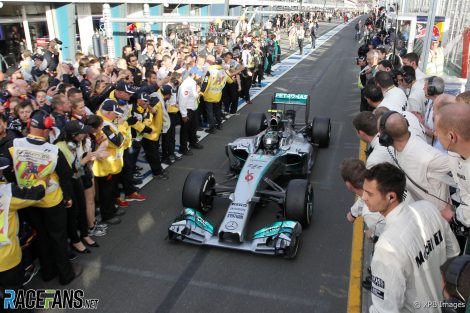
By contrast, until Honda rejoined the sport in 2015 Mercedes had just two rival engine suppliers – Ferrari and Renault – to beat, with the former being the only other ‘works’ team on the grid given that the latter supplied Red Bull. Of the rest, Mercedes supplied (a declining) Williams and Force India, neither of which was geared up to beat its supplier.
Thus, Mercedes needed only to concern itself with Ferrari, plus a Red Bull duo powered by (anaemic) Renault engines and nowhere else to go, with fiscally challenged teams such as Sauber, Marussia and Caterham making up grid numbers.
Advert | Become a RaceFans supporter and
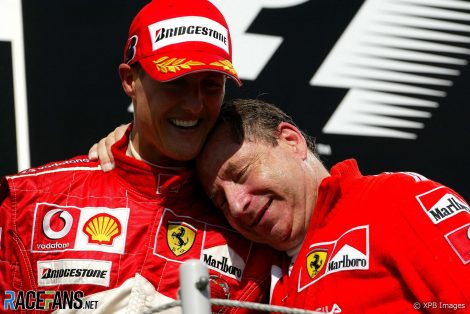
Of course it is not, the fault of Mercedes that Red Bull (with first Renault, then Honda power), Ferrari and McLaren (Mercedes, Honda and Renault) failed to get their collective acts together for whatever reasons. But it is surely easier to beat depleted fields than a variety of strong competitors, each with differing strengths. In the 134 races since the start of the hybrid era, Mercedes scored 54 one-twos, a hit rate of 41%.
During its six-year reign, encompassing 101 races, Todt’s Ferrari scored 24 one-twos, a little over 20%, indicating how much stronger was the overall competition back then. Indeed, Ferrari scored five consecutive world titles with only Schumacher during this period, while both Lewis Hamilton (five titles to date) and Nico Rosberg (one) claimed Mercedes’ hybrid world championships, underscoring the dearth of strong competition.
*Season in progress

Therefore the Mercedes-powered teams had three votes, while Ferrari, Renault (Red Bull) and Honda (McLaren) one each. Again, don’t blame Mercedes for this political advantage, but it points to a voting superiority denied the others. During Ferrari’s heyday there was but one Ferrari customer team – Sauber – but then there was no Strategy Group and all teams had equal votes via the F1 Commission.
The same imbalance applied to revenues: During the noughties all teams were on the same performance payment structure, except Ferrari, who creamed 5% off the top as reward for its heritage.
Thus, of its nine grid peers Mercedes effectively needed to see off just two teams, and then seldom in the same year: Red Bull and Ferrari. Tellingly, outside of this trio only one other team has featured in the top three throughout the past seven seasons, namely Williams placing third to Red Bull, and then only during the first two seasons under the hybrid formula.
This underscores just how seriously Ferrari has underperformed since 2014, in turn illustrating how much easier is the task for Mercedes than it had been for Ferrari under Todt. As its streak of success began Ferrari fought off a concerted effort from Williams and McLaren for four straight years, during which time the fight thrice went to the final round, once with four points separating winner from loser and once with three teams in contention.
In analysing the outside factors that contributed to Mercedes’s superiority, one statistic says it all: in the six seasons since the hybrid era sparked Mercedes’s domination, Ferrari has had no fewer than four team bosses, whose pedigrees including cars sales (Marco Mattiacci) and tobacco marketing (Maurizio Arrivabene). Add in three corporate CEOs and Mercedes surely benefitted (if only indirectly) from Ferrari’s instability.
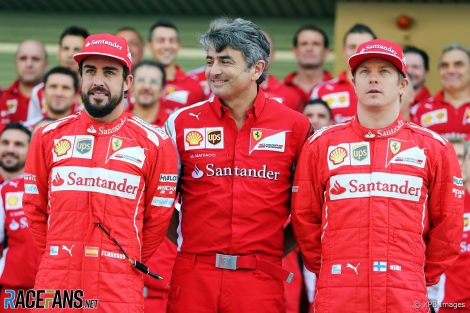
Ferrari’s driver turnover, too, has helped Mercedes: three former champions have been and gone (or are about to go). Sebastian Vettel, Fernando Alonso and Kimi Raikkonen have seven titles between them but, tellingly, only one of those was won in a red car.
Mercedes deserves full credit for making but a single driver change in six years and then only due to Rosberg’s unexpected retirement. Back then Ferrari, too, made a single change in six years, signing Rubens Barrichello as replacement for Eddie Irvine.
Although management stability has been one of Red Bull’s strengths – executive consultant Helmut Marko, team boss Christian Horner and chief technical officer Adrian Newey have functioned as a tight-knit group since 2006 – the same cannot be said of another equally crucial component: power units.
Having acrimoniously fallen out with engine supplier Renault, with whom Red Bull won four double titles on the bounce between 2010 and 2013, its status was reduced from ‘works’ partner to customer after the two fell out and the French company returned in 2016 as team owner after reacquiring the (run-down) Enstone operation it had sold to Genii Capital six years earlier. Rebuilding Enstone has taken five years so far.
Fingers can be pointed in many directions for the Red Bull-Renault split, but the bottom line is that Red Bull was forced into the (unreliable) clutches of Honda. Now the Japanese company has given notice of its departure at the end of 2021 – ostensibly on environmental grounds – both Red Bull teams face further instability and political skirmishing throughout next year.

None of the foregoing is aimed at denigrating Mercedes’s magnificent achievement, nor at belittling its record-setting run. Rather it is intended to illustrate that F1 records that are trotted out almost on a weekly basis are meaningless without direct comparisons – which do not exist in this sport. 100 metre sprint records can be directly compared: 100 metres is 100 metres; whether in 1950 or 2000; whether in Baku or Timbuktu. True, progress has been made with running ‘spikes’ and turf and weather conditions are variable, but the activity has remained fundamentally the same.
Nor does the strength of the opposition matter in those activities – records set over specific distances or height over bars are valid, all other factors being equal regardless of whether the runner-up placed a split second in arrears or 50 paces; whether the second-placed jumper is an inch or yard shy.
In such sports direct comparisons are possible; in F1 they are not, whether for lap records, outright wins, points tallies or titles claimed. F1’s rules, regulations and formats are a continuous work-in-progress, making comparisons absolutely meaningless. Enjoy F1’s records by all means, but place no lasting store by them, is the moral.
Join the RaceFans Supporters Drive!
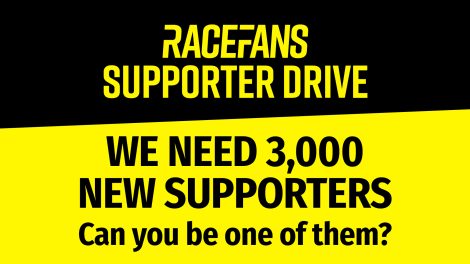 If you've enjoyed RaceFans' motor sport coverage during 2020, please take a moment to find out more about our Supporter Drive.
If you've enjoyed RaceFans' motor sport coverage during 2020, please take a moment to find out more about our Supporter Drive.
We're aiming to welcome 3,000 new Supporters to help fund RaceFans so we can continue to produce quality, original, independent motorsport coverage. Here's what we're asking for and why - and how you can sign up:
RacingLines
- The year of sprints, ‘the show’ – and rising stock: A political review of the 2021 F1 season
- The problems of perception the FIA must address after the Abu Dhabi row
- Why the budget cap could be F1’s next battleground between Mercedes and Red Bull
- Todt defied expectations as president – now he plans to “disappear” from FIA
- Sir Frank Williams: A personal appreciation of a true racer





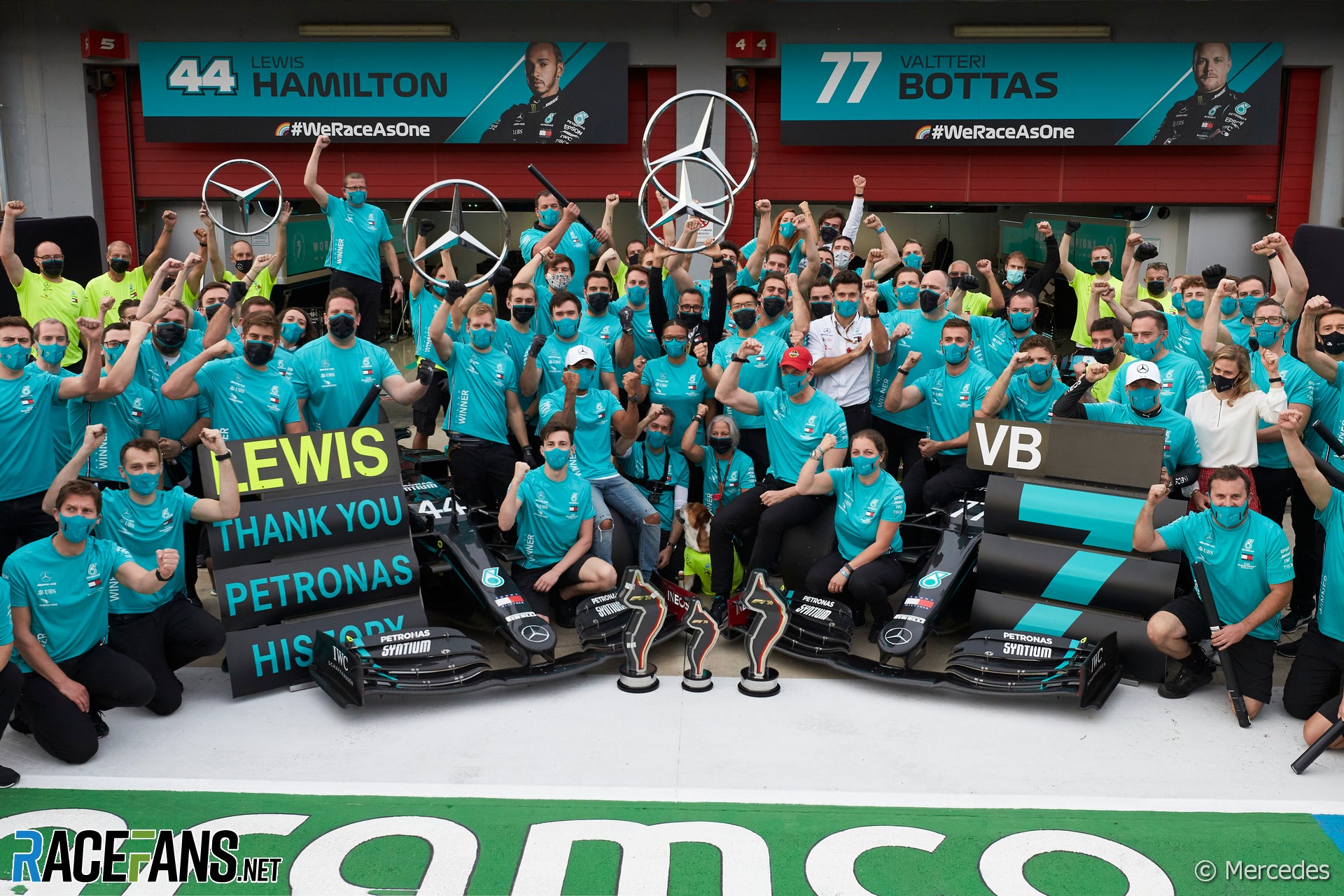
Jere (@jerejj)
11th November 2020, 12:21
A small note: Mclaren also before Honda’s return. I agree with the last portions concerning comparisons, though.
Jayser
11th November 2020, 12:29
This article omits one crucial advantage Ferrari had during the Schumacher years: those tailor-made Bridgestone tyres which gave it such a huge advantage over the rest of the field. As the article does admit: once the tyre rules changed, Ferrari’s advantage evaporated.
Jonathan Edwards
12th November 2020, 2:37
This gets thrown out all the time, and it still baffles me as to why everyone thinks it’s an ironclad argument. You realize it was a tire war? Why would Bridgestone design tires that suited Jordan and Minardi at the expense of Ferrari? Did Michelin not have the opportunity to design tires that suited the teams best placed to win with them? They certainly worked closely with Renault in 2005-06. This is a lazy argument that is disingenuous to what every team competing in F1 pursues – maximization of every allowable advantage.
Kribana (@krichelle)
11th November 2020, 12:58
With regards to engines, Red Bull need to design theirs. If Mercedes, Renault and Ferrari can design engines and chassis, why can’t they design theirs? It ain’t nobody’s fault if Red Bull don’t have an engine supplier.
Jere (@jerejj)
11th November 2020, 13:05
@krichelle Because of costs and lack of expertise in this area. Otherwise, Red Bull may have started doing engines already a while back. Mclaren hasn’t done powertrains in F1 either, i.e., like Red Bull, they also always relied on external manufacturers.
nick---0 (@nick-0)
11th November 2020, 13:22
The engine token system was also a major factor in their dominance. It made sense to control costs, but essentially locked in their dominance in quite a frustrating way. More so in the early years of the new engine.
Not having testing also had a big effect. Do you guys remember the days when a team screwed up and then later in the season came out with a B spec car and then that changed their fortunes?
Aiii (@)
11th November 2020, 14:47
Yeah, I was very surprised to not see this mentioned in the article. Mercedes absolutely hit the ground running in 2014 and their advantage was huge. The token system then further limited the other teams to advance and potentially close the gap, and by the time it was abolished we had already lost several years worth of proper development.
But even then, when you’re that far ahead as a starting point, and everyone (potentially) develops at the same pace, it will take forever to close the gap within the complete restriction of the rules as they are now. There’s only so much you can change on the engine, and what’s worse, you can’t test your changes in actual real life race cars outside of a few days a year. How would anyone be expected to close that big of a gap.
This is nothing against Mercedes, they are doing a stellar job, drivers included. But it’s been pretty clear for a bit that closing the gap is impossible under the current environment made by the regulations.
Rob (@)
11th November 2020, 16:27
Fully agree. I think the budget cap won’t be as effective as expected unless the fia loosens the regs a bit and gives teams more room to develop not as strictly tied to spending.
Homerlovesbeer (@homerlovesbeer)
11th November 2020, 18:05
@nick-0 Thank you! I also can’t belive that the token system wasn’t mentioned, a highly flawed system supposed to save money (I’m sure it did) and cut costs but failed miserably by never allowing competitors the chance to close the gap to Mercedes.
The token system can be attributed to handing Mercedes 7 championships in a row by hamstring competitions ability to close the gap and thus allowing Mercedes to pump resources into chassis development to cement their advantage.
I’m sure if the token system didn’t exist we would have seen Ferrari and probably Redbull win at least 1 world title each during the hybrid era.
Homerlovesbeer (@homerlovesbeer)
11th November 2020, 18:13
I forgot to add that I also agree that the limited testing is another contributing factor that hugely penalizes teams that take steps down the wrong development path and makes it incredibly hard to correct mistakes, Ferrari being the perfect example, possibly taking 2-3 years to undo the wrong aero philosophy.
F1oSaurus (@)
12th November 2020, 16:55
@homerlovesbeer
No, that’s not how that worked at all. They still spent as much on the engines as before. They just had a little less wiggle room
Besides the token system only lasted a few years and was already neutered almost from the get go.
F1oSaurus (@)
12th November 2020, 8:45
@nick-0 That token system was scrapped quite quickly though. Well before it turned to be a limiting factor
hobo (@hobo)
12th November 2020, 15:26
Until my actual comment is cleared. The token system existed for 3 years. More than enough time to be a limiting factor.
F1oSaurus (@)
12th November 2020, 16:54
@hobo They had plenty tokens available still.
hobo (@hobo)
13th November 2020, 18:32
@f1osaurus – I’ll take you at your word that they had tokens available. But portions of the engine were frozen from being touched.
F1oSaurus (@)
14th November 2020, 9:13
@hobo Eitehr way there was still plenty room to develop and catching up should have been easier than gaining more advantage
The reality is that it was NOT the massively limiting factor that is presented above. While you are just claiming it wasn’t 0%. Well good for you. Nit that pick man!
Alec Glen (@alec-glen)
12th November 2020, 14:37
Conversely, I actually think the token system was well designed for how it was intended, to ensure that a team/manufacturer couldn’t just outspend the field to achieve dominance in that one area. It’s just that Mercedes’ advantage was so great, at least a couple of years in performance and the optimum architecture (4+years reliability?), that it locked them out in front preventing competitors spending their way put of trouble.
I think if we removed Mercedes from the equation, the engine rules and entire formula could have been amazingly competitive over the past 6 years so maybe the rules were actually reasonable but we just need to applaud Mercedes’ brilliance.
Oconomo
11th November 2020, 13:42
@krichelle
” If Mercedes, Renault and Ferrari can design engines and chassis, why can’t they design theirs?”
Hmm, because the three companies you name are actual car manufacturers instead of fizzy drink companies.
And why should they? When they entered the sport, the most succesfull teams in F1 were Lotus, Ferrari, Williams and McLaren and of those 4 teams 3 teams never build their own engine.
It’s ony after Mercedes and Renault argued for the introduction of the worst, and already obsolete, engine formula ever, that we have this discussion. (an engineering exercise in futility)
The the problem is not RB not making their own engines, the problem is an engine formula that denies independent team a chance to win a title, like they were able to before the hybrid era.
Steve (@scbriml)
12th November 2020, 16:56
Then perhaps Red Bull should stick to what they do best?
sbewers (@sbewers)
11th November 2020, 15:24
Fantastic read Dieter, I really enjoyed that article and completely agree with your conclusion. What strikes me also is the graph showing how Ferrari built up to their “dominant” era in terms of win rate, gradually getting better and better each year. Compared with Mercedes who went from a couple of wins here and there to almost instant domination from 2014.
I just want to pick up on a couple of inaccuracies (sorry for nitpicking, I really did enjoy the article!).
“In 2003 four teams won grands prix” – actually it was five (Ferrari, McLaren, Williams, Renault and Jordan), although Giancarlo Fisichella’s win for Jordan in the 2003 Brazilian GP was far more fortuitous than even Pierre Gasly’s win at Monza this year!
“Tellingly, outside of this trio only one other team has featured in the top three throughout the past seven seasons, namely Williams placing third to Red Bull, and then only during the first two seasons under the hybrid formula.” – In 2014 indeed Williams placed third to Red Bull with Ferrari back in fourth, but in 2015 they placed third to Ferrari as Red Bull slipped back (a big contributory factor to the acrimony with Renault you mentioned later in the article!).
Fraser Loudon
12th November 2020, 7:37
I would question the gradual build up of wins comparison.
Bought Brawn at end of 2009 and 2010 was effectively a longer rebadged 2009 car.
2010 took podium. But was starting process.
2011 struggled with tyres but first car built.
2012 took 2 pole positions and 1 win but could have been 2 without Schumachers penalty in Monaco. But again stand out performances at track with low speed corners and long straight.
2013 started to dominate qualifying at start of year competing for wins (struggling with tyre wear but again took 3 wins this year) then stopped developing car to concentrate on 2014. As has been well documented RBR over thought and pushed hard to end of 2013 where Merc moved target to 2014. (RBR were left with underdeveloped 2014 car.
But if you take comparative standing through first half of 2013 before Merc changed tact they were already starting to push to the front on the chassis side. New engines helped elevate this to a higher plane but the gradual build of wins had already happened. It wasn’t as sudden a change as you mention.
The biggest issue was the engine token system. As others have mentioned. It’s also reason Honda struggled until they moved to RBR. F1 really under thought this and Mercedes spent years working towards this starting point in back ground.
Rules have been changed each year and even manufacturers have produced more powerful if illegal engines in 2 of the 7 years with more power than Mercedes but the team and driver combo beat both of these. 2017 and 2018 should have gone to a driver in a red car.
I think the article makes some valid points re competitive nature of competition from other teams bu talso forgets Ferrari prioritised 1 driver and did now allow completion from within which was bigger issue.
Mercedes like Mclaren before he 2 strong drivers going toe to toe every weekend. Ferrari had Schui and. Whipping boy.
Also the qualifying format has fueling process is probably the biggest factor of change. No refuelling has cemented the advantage of start from front. Just ask 2010-2013 Vettel about that. Start at front of softer tyre out earlyish and race to end.
Refuelling adds alternative strategy and tyre use that would have chucked out more winners.
All in all difficult to compare but they are all playing the same game and Merc have best chassis, best engine and best driver/ driver pairing for most of last seasons. Even if you switch them to Honda this year for power or Ferrari last year for power. They would still be champions as Competition struggle to compete at level set by champions.
CC
11th November 2020, 23:45
So, the main point is that Schumacher is better than Hamilton :)
Mark in Florida
12th November 2020, 0:22
Great article Dieter, it’s not Mercs fault for trying to keep the other teams down. It’s just good politics in a highly political sport. Ferrari would do the same and have used or threaten to use their veto to frustrate policy they thought would adversely impact them over the years. I do agree that the competition was better in Schumachers day. F1 was rich in manufacturer teams and there was more sponsorships being spread around. Today there is a dearth of competition regardless of reasons concerning how effective the team’s have been. The token system limited how much catching up they could do. Meanwhile Merc raced ahead with their advantage in hand. When the sporting body makes up rules that cripple the competition and Bernie limits the money available it’s no wonder the competition dropped off. It does make their wins seem a little hollow overall.
Jay Menon (@jaymenon10)
12th November 2020, 0:42
I think any fan who has followed F1 for the last 20 odd years would concur with this.
I’ve always been of the sentiment that F1 was a lot more exciting in the Ferrari dominant era than it is today, simply because there was more competition. Baring 2002, which Schumacher and Ferrari walked, the other years were good fun. Montoya, Kimi, Ralf, Alonso et al were always there or there about. If you think about in from 2000-2013, I can only think of 2002, 2011 and the latter half of 2013 being totally dull.
Mercedes should not be blamed for their success, I mean thats just stupid. However, everyone needs to acknowledge their level of dominance over the competition. Once again, not their fault.
ruliemaulana (@ruliemaulana)
12th November 2020, 4:44
Hi Dieter, can you elaborate on Petronas contribution to Mercedes AMG? Petronas is one of two biggest GDP sources to Malaysia other than tourism. Both are in a bad shape because of pandemic now. What will happen if Petronas decided to pull off?
Would it affected Mercedes financially? Would it be significant? What about performance? As it looks like their customers without Petronas fuel and oil never reach the engine potential.
Jay
12th November 2020, 4:52
Omitting Ross Brawn’s role in those highly strategic years is borderline farcical.
Someone needs to rewatch the Ferrari seasons.
jhg103 (@joshgeake)
12th November 2020, 7:02
Something else not often mentioned is the amount of money that Mercedes threw at hybrid engine development before the hybrid rules were ratified. At one point they had at least three different PU philosophies on the bench, pumping in the miles. Mercedes then worked with the FIA to “encourage” the rules towards their favoured architecture.
All that initial investment has worked wonders for them, it’s just a shame the fans have suffered.
F1oSaurus (@)
12th November 2020, 17:07
@joshgeake Wrong:
– It was Ferrari who insisted on switching from 4 to 6 cylinders.
– It was Renault (or rather Newey) who insisted on switching from inline to a V
– The push for hybrid was pushed by Todt.
Sure Mercedes will always have something “on the bench”. Sure they will have considered multiple philosophies. Yet are you seriously pretending that Ferrari and Renault did not do the same?
None of them had a fully working hybrid power train running. They start with concepts. Usually only cylinder even.
Dieter Rencken (@dieterrencken)
16th November 2020, 8:53
Wrong on ALL counts:
Ferrari and Mercedes pushed for 6cyl. In return for accepting it, Renault, which did not have an own 6cyl in its performance car range, demanded the formula be pushed out a year to 2014, which is what happened.
Renault and Newey did not push for a V angle as the former was pushing for a 4cyl and a V4 was not then an option. Newey supported a V due to structural rigidity but in 2009 – when the hybrid formula was formalised – Red Bull was a Renault customer and in the shadow of the works team.
Only later with the hindsight of Porsche’s successes did folk say ‘Maybe we should have…’
The hybrid push came from Mosley, and signed off at his last WMSC meeting in Oct 2009. Todt continued what had been agreed, including by all team bosses and Ecclestone.
A 400cc single cyl test engine designed for inline is of limited value when the formula switches to 333cc V – induction, turbo and exhaust all change. All theoretical and hard concept work through to June 2011 had been undertaken on 400cc inlines, which went out the window.
Emmanuel AllSports
12th November 2020, 8:53
I guess we just need to accept facts and statistics as they stand without trying to add more or less value to them.